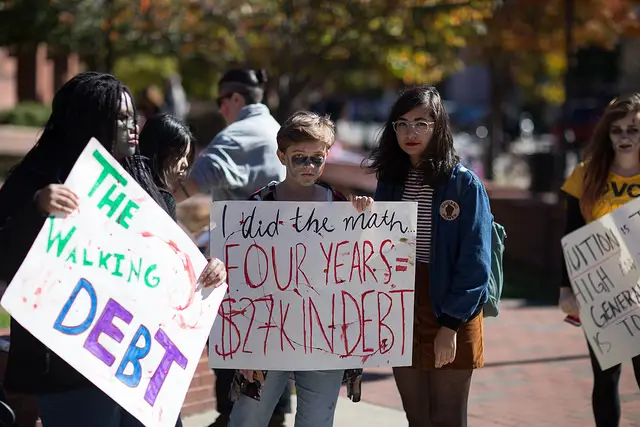The majority of first-time undergraduate students who complete their degrees at private for-profit institutions borrow money to pay for college, a new Baccalaureate and Beyond report, released by the National Center for Education Statistics, has revealed.
Released on Wednesday, the report looks at the outcomes of 2015–16 bachelor’s degree recipients one year after graduation. Specifically, it looked at time to degree, the amount borrowed for undergraduate education, post-baccalaureate enrollment, employment status, earnings and job characteristics, and steps taken toward a career in teaching.
Among 2015–16 first-time bachelor’s degree recipients, the report found that 85 percent borrowed $43,600 on average to fund their education, 69 percent borrowed $32,500 on average, and another 65 percent of graduates from public institutions borrowed $27,900. In total, 67.4 percent had student loan debt burdens after graduating.
These figures indicate that a growing number of students are borrowing money to pay for their college, adding to the pool of 45 million people who already owe $1.6 trillion in student debt across the country.
Loans are a source of regret for many recent graduates with at least a bachelor’s degree. Across different generations, millennials rank highest with 28.8 percent regretting taking out their student loans, followed by 26.2 percent among members of generation X, and 13.4 percent among baby boomers.
When it comes to the top borrowing demographics, females, black and older students top the charts. 70.03 percent of female students who mostly took out federal loans borrowed $31,000 on average, while 85.9 percent of black students and 80 percent of students ages 30 and older borrowed between $36,900 and $37,700 on average.
Studies have also shown that debt has a profound effect on minority students, especially among black and Hispanic adults. Last year, a study conducted by the University of Illinois and the University of Michigan found that black and Hispanic adults who graduate college with debt burdens have a significantly lower net worth at the age of 30 than students who don’t borrow to pay for college.
Students belonging to these two races owed an average of $14,670 when they graduated, compared to $2,946 for students of other races in the full sample of 1,455 young adults.
On a positive note, the report found more first-time bachelor’s degree recipients are becoming employed within 12 months after graduating. Male recipients who were employed full time had a median annual income of $41,600. For females, the median annual income was $37,400.
Pennsylvania Ranks Top Among States with Highest Student Debt Levels

